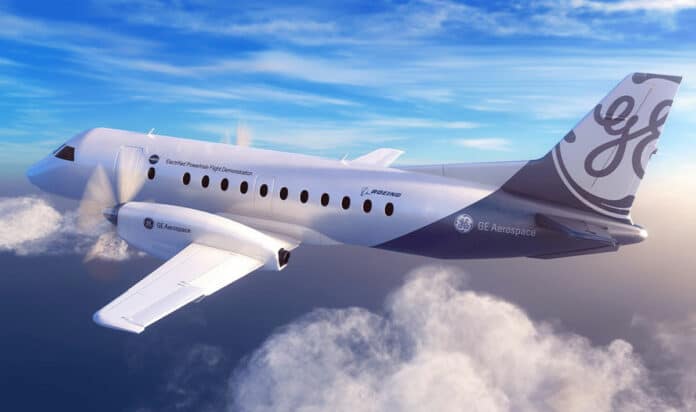The aviation industry accounts for about 2.5% of global CO2 emissions globally, and its carbon footprint is growing at a time when climate change goals require it to go down. Reducing aviation industry emissions is a crucial step towards mitigating climate change and improving air quality.
The aviation industry is working hard to reduce its carbon footprint and become more eco-friendly. For this, some innovative approaches are being explored, such as combining fuel cells with a turbine engine running on Sustainable Aviation Fuel (SAF).
This is the vision of GE Aerospace researchers, who are looking for a way to make flight possible with net zero CO2 emissions.
GE Aerospace Research has received $4.5 million from ARPA-E to advance its FLyCLEEN (FueL CelL Embedded ENgine) project, which aims to develop a hybrid electric propulsion system that combines solid oxide fuel cells and a gas turbine powered by SAF. The use of fuel cells could significantly improve the efficiency of converting SAF’s chemical energy into electric power and reduce CO2 emissions to near-zero levels.
The company announced this week it successfully completed the design phase of the project. Now, the Phase 2 funding will enable GE Aerospace Research to build and demonstrate a 25kW power generation subsystem as a proof of concept.
“The integration of fuel cells into jet engine propulsion system represents a potentially promising hybrid technology for additional fuel efficiency technologies in higher thrust aircraft applications,” says John Hong, a GE Aerospace senior combustion research engineer and FLyCLEEN project leader. “The use of SAF demonstrates the compatibility with lower carbon fuels to capture further CO2 reduction benefits.”
It’s not exactly clear how the system will work, but Hong explained this hybrid approach uses SAF in both the fuel cells and gas turbines. A portion of SAF will be transformed into synthetic gas and will feed the fuel cell, while the rest of SAF is consumed in a gas turbine engine. This is a novel concept to combine the two.
Hong added, “This is such an exciting time for the aerospace industry. From fuel cells and SAF to advances in electric power, hydrogen, and even new engine architectures like our open fan design, we are seeing a confluence of technologies driving progress on a number of fronts. And we will need every bit of new investments and public partnerships as we have with ARPA-E to meet the industry’s goal of net zero CO2 emissions by 2050.”
